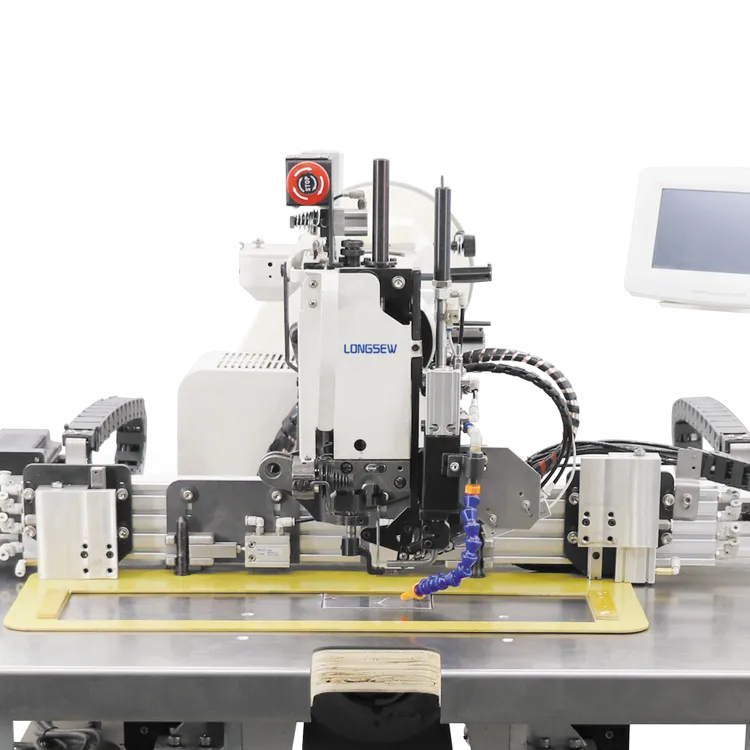Understanding the Functionality and Importance of Lock Stitch Sewing Machine Needles in Textile Manufacturing
The Lock Stitch Sewing Machine Needle An Essential Component for Versatile Sewing
In the world of sewing, the lock stitch sewing machine has earned its place as a staple tool for both professional tailors and hobbyists alike. One of the key components that enable this machine to function efficiently is the lock stitch sewing machine needle. Understanding its significance can dramatically enhance one’s sewing experience, offering better results, durability, and versatility.
The lock stitch sewing machine operates using a dual-thread system one thread is fed from the needle, and the other from a bobbin beneath the fabric. This configuration creates a tight, secure stitch that is well-suited for a variety of fabrics and applications. The needle itself plays a crucial role in this process, acting as the point where the upper thread penetrates the fabric, forming the stitch and interlocking with the lower thread.
Lock stitch needles come in various sizes and types, each tailored to specific sewing tasks. The most common size system used is the metric system, which ranges from 60/8 (very fine) to 110/18 (very heavy). Selecting the right needle size is particularly important, as it can affect not only the quality of the stitches but also the overall outcome of the sewing project. A needle that is too large can create large holes in delicate fabrics, while a needle that is too small may struggle to penetrate thicker materials, ultimately causing skipped stitches or a broken needle.
lock stitch sewing machine needle

Additionally, there are different types of lock stitch needles designed for varied applications. For instance, needles with a rounded tip are ideal for sewing knit fabrics, as they slide between the fibers rather than piercing them, reducing the risk of snagging. Conversely, a sharp needle is perfect for woven fabrics, as it can easily penetrate the tight weave, creating clean and precise stitches. Specialty needles, such as twin needles for parallel stitching or quilting needles for multi-layered quilts, also contribute to the versatility of sewing projects.
The material of lock stitch sewing machine needles is another factor to consider. Most needles are made from high-quality steel, often coated with chrome or nickel to enhance durability and reduce friction. These coatings enable smoother sewing, especially when working with dense or heavy materials. Using the right needle material can significantly impact the lifespan of both the needle and the sewing machine, as well as reduce the likelihood of needle breakage, hence preventing potentially costly machine repairs.
Maintenance is key to ensuring the longevity and effectiveness of lock stitch sewing machine needles. Regularly replacing needles, depending on the frequency of use and type of materials sewn, is vital. A general rule of thumb suggests changing the needle after every project or every 8 hours of sewing to maintain optimal performance. Dull or damaged needles can lead to poor stitch quality, fabric damage, and increased risk of sewing machine issues.
In conclusion, the lock stitch sewing machine needle is a fundamental component that can make or break a sewing project. By understanding the various sizes, types, and materials available, as well as committing to regular maintenance, sewers can enhance their skills and enjoy a seamless sewing experience. Whether crafting garments, home décor, or accessories, the right lock stitch needle can make all the difference in achieving professional-quality results. Investing time in selecting and caring for this indispensable tool is essential for anyone serious about the art of sewing.
-
Industrial Cylinder Arm Sewing Machine: Revolutionizing Heavy-Duty SewingNewsJul.28,2025
-
Cylinder Arm Sewing Machine: Perfect for Special Sewing ApplicationsNewsJul.28,2025
-
Cylinder Bed Sewing Machine: Essential for Sewing Complex MaterialsNewsJul.28,2025
-
Heavy Duty Sewing Machine: The Essential Tool for Industrial ApplicationsNewsJul.28,2025
-
Computerized Pattern Sewing Machine: Revolutionizing Precision StitchingNewsJul.28,2025
-
Heavy Duty Industrial Sewing Machine: Power Meets PrecisionNewsJul.28,2025
-
Leather Sewing Machine: The Industrial Standard for Tough MaterialsNewsJul.18,2025





























